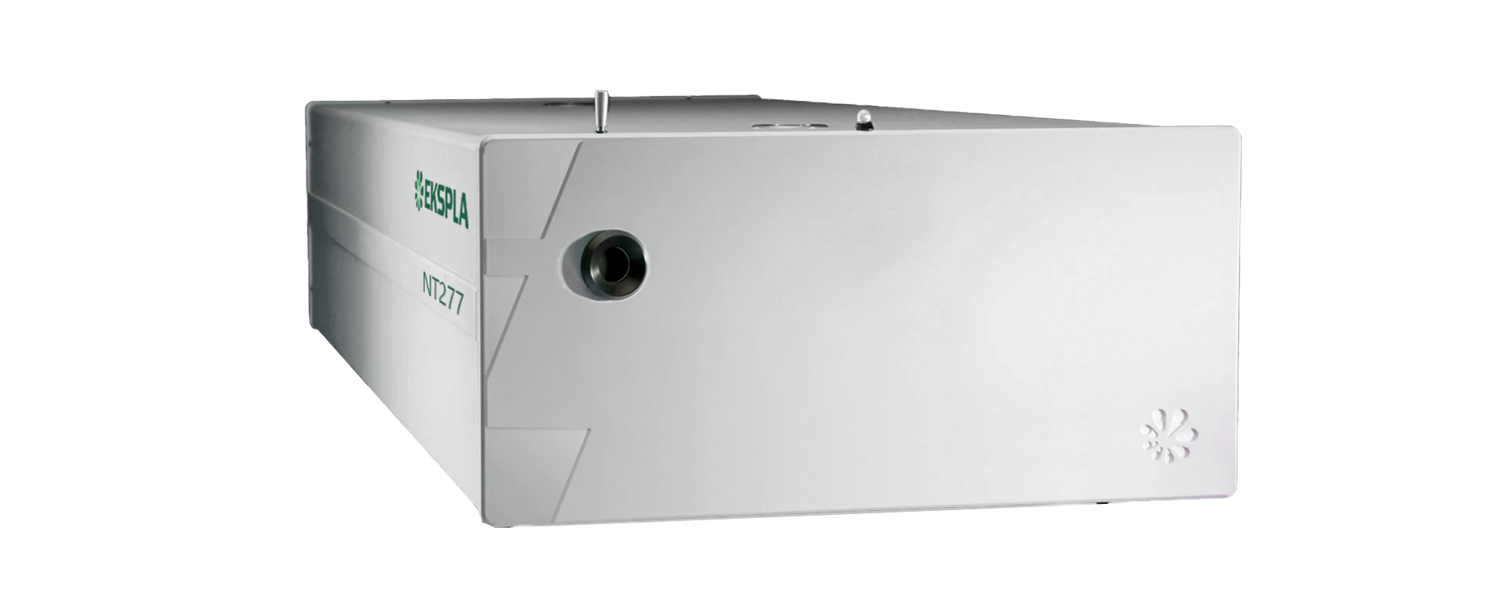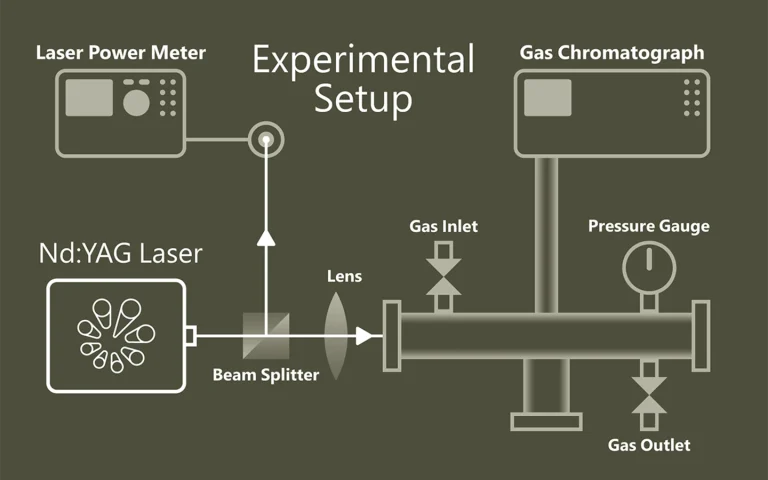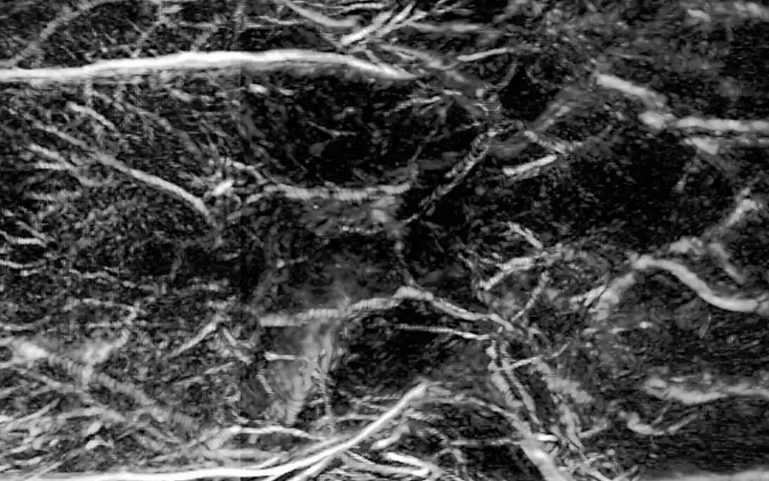NT270
Abstimmbarer DPSS-Laser im NIR–MIR-Wellenlängenbereich
Der NT270 ermöglicht softwaregesteuerte, lückenlose Durchstimmbarkeit von 2500 nm bis 4475 nm mit einer Wiederholrate von 1 kHz – alles aus einem einzigen Gerät. Der breite IR-Abstimmbereich macht diesen Laser zur idealen Wahl für IR-Anwendungen wie z. B. die optische Nahfeld-Mikroskopie (s-SNOM), die Vibrationsspektroskopie einzelner Moleküle sowie die Gasspektroskopie.

Features
- Integration von DPSS-Pumplaser und OPO in einem einzigen Gehäuse
- Separate Ausgangsports für Pumplaser und OPO
- Wellenlängenbereich von 2500 nm bis 4475 nm
- Schmale Linienbreite
- Softwaregesteuerte, schnelle Wellenlängenabstimmung
- Pulsdauer < 7 ns
Anwendungen
- Optische Nahfeld-Mikroskopie (s-SNOM)
- Vibrationsspektroskopie einzelner Moleküle
- Infrarotspektroskopie (IR-Spektroskopie)
- Gasspektroskopie
Anwendungen

Wenn Licht Moleküle trennt
Photolyse beschreibt die lichtinduzierte Spaltung chemischer Verbindungen und spielt eine zentrale Rolle in der Photosynthese durch Wasserspaltung. Die Laser-Flash-Photolyse nutzt kurze, intensive Laserpulse (ns–fs), um kurzlebige Zwischenprodukte wie Radikale oder angeregte Zustände zu erzeugen und deren zeitlich aufgelöste Absorption zu beobachten. Probe-Pulse erfassen Reaktionsverläufe. Der Einsatz von OPOs erweitert die Möglichkeiten spektroskopischer Untersuchungen deutlich.

Mit Licht hören – mit Schall sehen
Die laserbasierte photoakustische Bildgebung ist ein innovatives Verfahren, das Licht und Schall kombiniert, um hochauflösende Bilder biologischer Gewebe zu erzeugen. Dabei wird Gewebe mit kurzen, meist spektral abstimmbaren Laserpulsen bestrahlt. Diese führen zu einer minimalen lokalen Erwärmung und erzeugen dadurch Ultraschallwellen, die gemessen und in Bilder umgewandelt werden.
Anwendungen
Wissenschafliche Veröffentlichungen
Photodissociation of Sodium Iodide Clusters Doped with Small Hydrocarbons
N. K. Bersenkowitsch, M. Ončák, J. Heller, C. van der Linde, and M. K. Beyer, Chemistry – A European Journal 24 (47), 12433-12443 (2018). DOI: 10.1002/chem.201803017.
Marine aerosols consist of a variety of compounds and play an important role in many atmospheric processes. In the present study, sodium iodide clusters with their simple isotope pattern serve as model systems for laboratory studies to investigate the role of iodide in the photochemical processing of sea-salt aerosols. Salt clusters doped with camphor, formate and pyruvate are studied in a Fourier transform ion cyclotron resonance mass spectrometer (FT-ICR MS) coupled to a tunable laser system in both UV and IR range. The analysis is supported by ab initio calculations of absorption spectra and energetics of dissociative channels. We provide quantitative analysis of IRMPD measurements by reconstructing one-photon spectra and comparing them with the calculated ones. While neutral camphor is adsorbed on the cluster surface, the formate and pyruvate ions replace an iodide ion. The photodissociation spectra revealed several wavelength-specific fragmentation pathways, including the carbon dioxide radical anion formed by photolysis of pyruvate. Camphor and pyruvate doped clusters absorb in the spectral region above 290 nm, which is relevant for tropospheric photochemistry, leading to internal conversion followed by intramolecular vibrational redistribution, which leads to decomposition of the cluster. Potential photodissociation products of pyruvate in the actinic region may be formed with a cross section of <2×10−20 cm2, determined by the experimental noise level.
Infrared spectroscopy of O˙⁻OH⁻ in water clusters: evidence for fast interconversion between O˙⁻ and OH˙ OH⁻
J. Lengyel, M. Ončák, A. Herburger, C. van der Linde, and M. K. Beyer, Physical Chemistry Chemical Physics 19 (37), 25346-25351 (2017). DOI: 10.1039/C7CP04577H.
We present infrared multiple photon dissociation (IRMPD) spectra of (H2O)nO˙− and (H2O)nOH− cluster ensembles for ñ ≈ 8 and 47 in the range of 2400–4000 cm−1. Both hydrated ions exhibit the same spectral features, in good agreement with theoretical calculations. Decomposition of the calculated spectra shows that bands originating from H2O⋯O˙− and H2O⋯OH− interactions span almost the whole spectral region of interest. Experimentally, evaporation of OH˙ is observed to a small extent, which requires interconversion of (H2O)nO˙− into (H2O)n–1OH˙OH−, with subsequent H2O evaporation preferred over OH˙ evaporation. The modeling shows that (H2O)nO˙− and (H2O)n–1OH˙OH− cannot be distinguished by IRMPD spectroscopy.
High-resolution, high-contrast mid-infrared imaging of fresh biological samples with ultraviolet-localized photoacoustic microscopy
J. Shi, T. T. W. Wong, Y. He, L. Li, R. Zhang, C. S. Yung et al., Nature Photonics 13 (9), 609-615 (2019). DOI: 10.1038/s41566-019-0441-3.
Mid-infrared (MIR) microscopy provides rich chemical and structural information about biological samples, without staining. Conventionally, the long MIR wavelength severely limits the lateral resolution owing to optical diffraction; moreover, the strong MIR absorption of water ubiquitous in fresh biological samples results in high background and low contrast. To overcome these limitations, we propose a method that employs photoacoustic detection highly localized with a pulsed ultraviolet laser on the basis of the Grüneisen relaxation effect. For cultured cells, our method achieves water-background suppressed MIR imaging of lipids and proteins at ultraviolet resolution, at least an order of magnitude finer than the MIR diffraction limits. Label-free histology using this method is also demonstrated in thick brain slices. Our approach provides convenient high-resolution and high-contrast MIR imaging, which can benefit the diagnosis of fresh biological samples.
